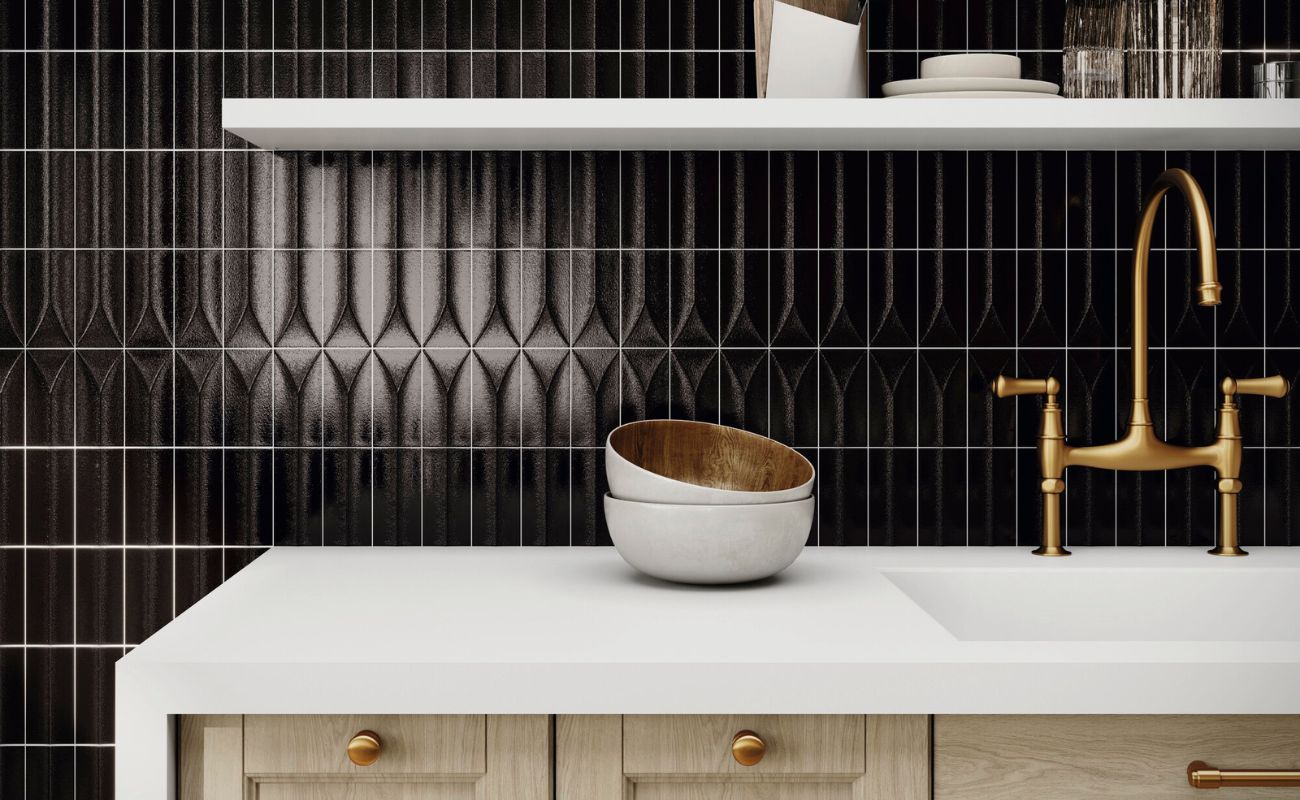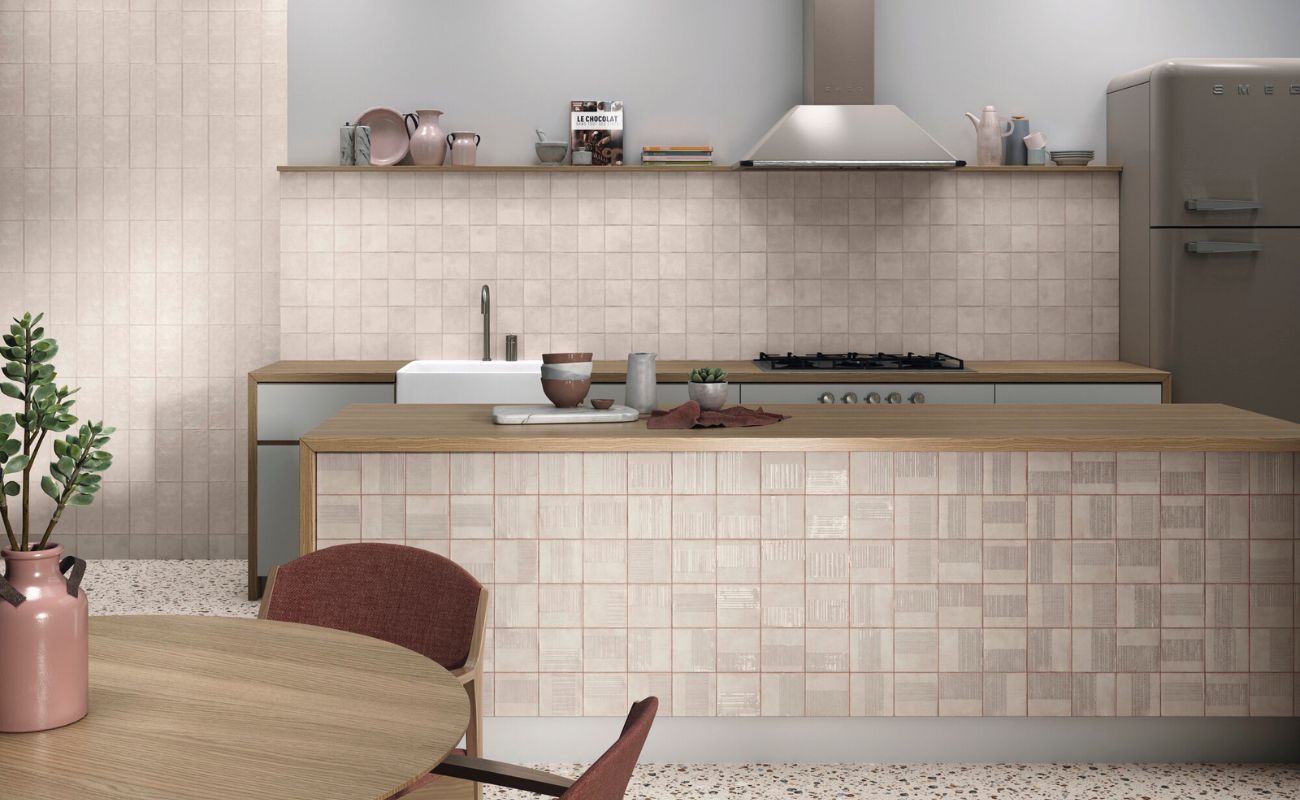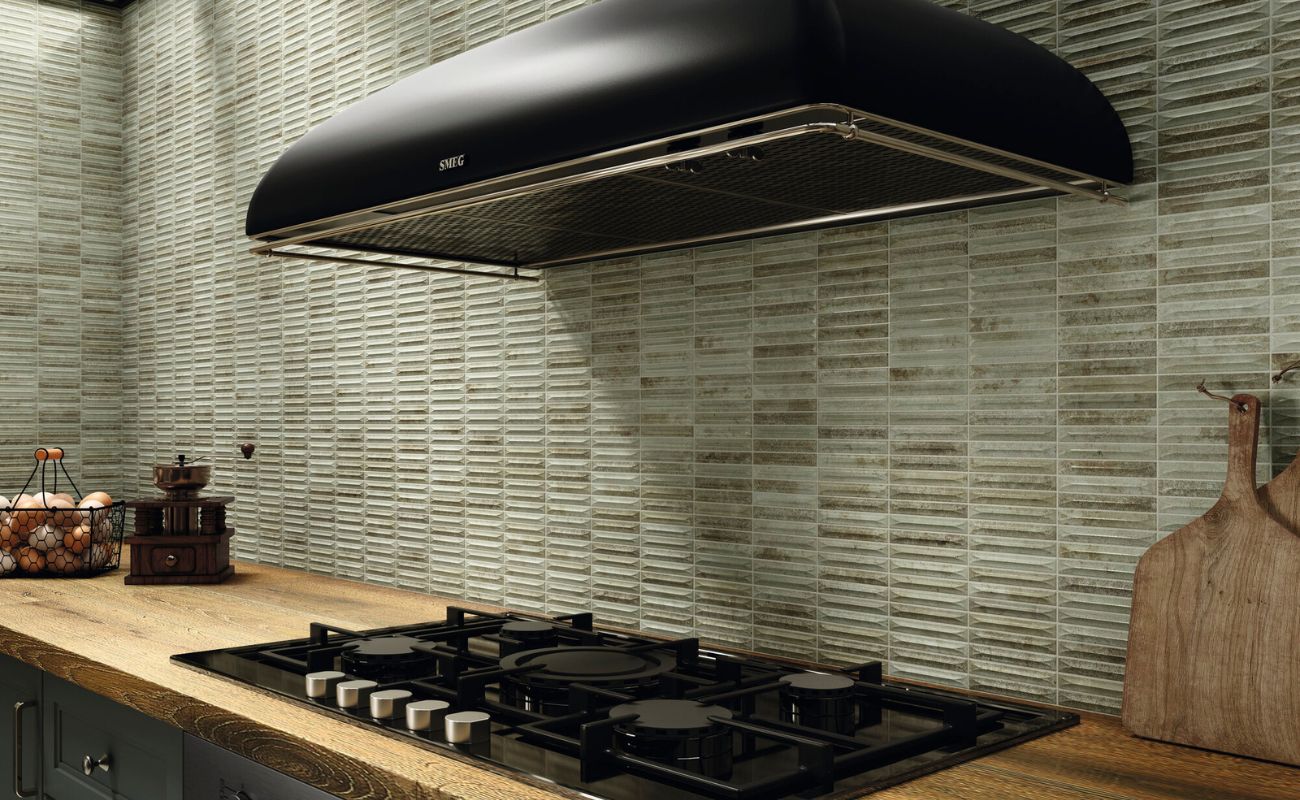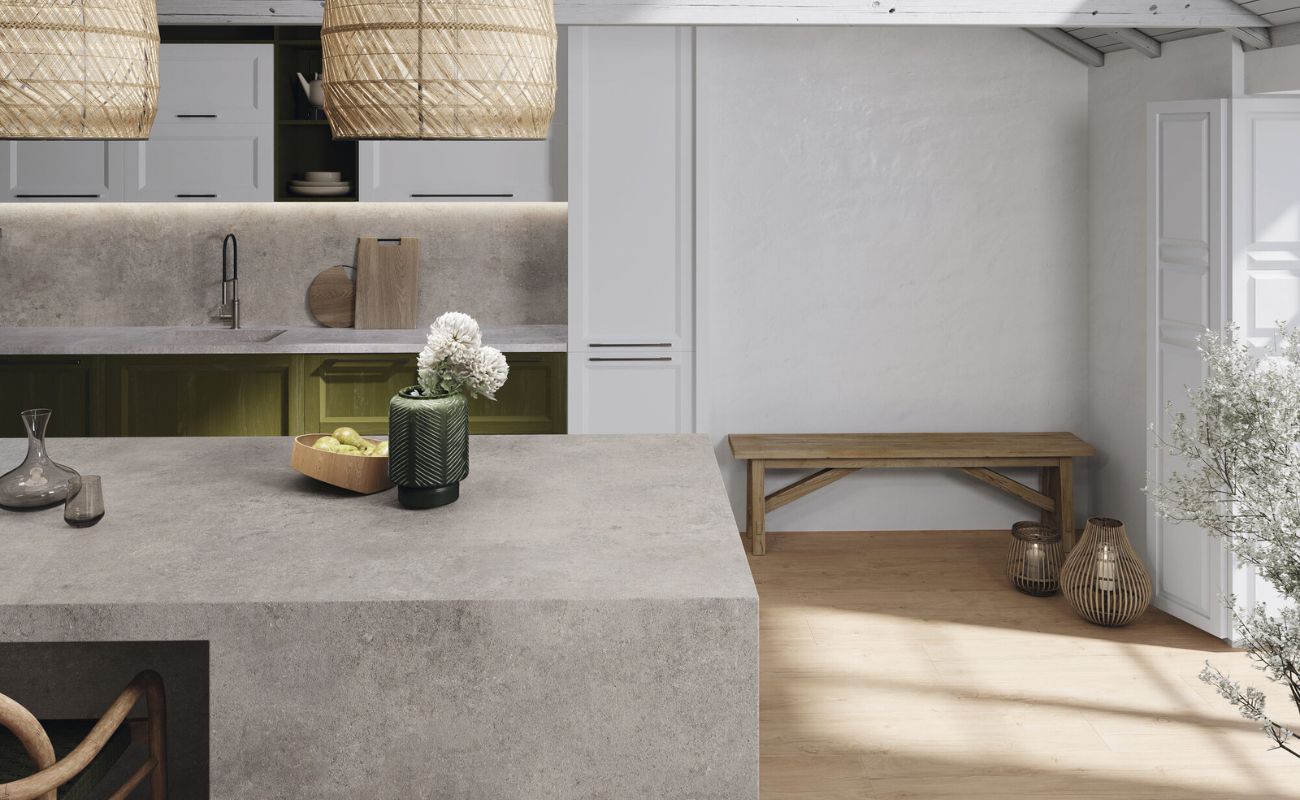Related Posts
Design & Ideas
Grout Colours and Their Impact: The Complete Guide to How They Shape Your Space
Halima Bapu

Written by: Halima Bapu
Modern kitchens look amazing with their sleek designs and smart features, but let’s be honest, they can sometimes feel a bit cold and impersonal. The kitchen is supposed to be the heart of the home, a place where everyone feels comfortable and welcome, not like a sterile lab. So, how do you add warmth to a modern kitchen without losing that clean, stylish vibe? In modern kitchen design, it can be a challenge to make the space feel truly inviting. Creating a calm environment is key to making your kitchen a relaxing and enjoyable place to spend time.
The great news is you don’t have to sacrifice your modern aesthetic to make your kitchen feel cozy. With some thoughtful choices around color, materials, lighting, and accessories, you can turn even the most minimalist kitchen into a warm and inviting space. Whether you’re starting from scratch or just want to freshen up your current kitchen, these practical tips will help you find the perfect balance between modern functionality and comfort. A warm atmosphere can be intentionally created in a modern kitchen by carefully selecting textures, greenery, and decorative elements that promote a sense of calm and well-being.
One of the quickest ways to warm up your kitchen is to move away from the classic stark white look that’s so common in modern design. White kitchens are timeless, sure, but they can sometimes feel a little cold. Adding warm undertones makes a big difference without losing that fresh, modern feel. The right use of colour can influence the warmth and personality of your kitchen, helping to create a more inviting and unique space.
Try swapping out bright white cabinets for warm neutrals that still feel clean and contemporary. Colors like Benjamin Moore’s Greige (OC-27) blend gray and beige for a soft, inviting backdrop. If you want to be a bit bolder, Mushroom Cap (177) brings a gentle earthiness while keeping things modern.
Rich accent colors can also bring your kitchen to life. Farrow & Ball’s Dead Salmon is a lovely soft blush that works beautifully on kitchen islands or accent walls. Terracotta backsplash tiles add natural warmth with their earthy orange-red tones, giving your kitchen character and depth while keeping those sleek lines intact. Wood accents and natural textures are fantastic for adding warmth and contrast too. Using a variety of colours, especially warm reds, oranges, browns, and earthy shades, can create a cozy and welcoming atmosphere in your kitchen.
Two-tone cabinets are another smart way to introduce warmth. Think warm upper cabinets paired with dark lower cabinets in charcoal or navy blue, this grounds the space while keeping it airy and modern.
When picking shades of gray, aim for ones with warm undertones instead of cool. Opt for warmer tones like Sherwin Williams’ Agreeable Gray (SW 7029), which is a popular choice that leans warm, helping your kitchen feel inviting rather than clinical. These subtle color shifts really change the mood of the room.

White kitchens are classic for a reason, the clean lines and timeless look are hard to beat. But without some thought, they can sometimes feel a bit chilly or impersonal. The trick is to layer in warmth and personality to make the space feel truly lived-in and welcoming. Start by choosing whites with warm undertones instead of stark, icy shades. Creamy or off-white cabinets and walls soften the look and make the kitchen feel more inviting. Adding texture helps too, matte finishes, beadboard paneling, or lightly textured tiles add depth and keep things from feeling flat or sterile. Maximise natural light, it’s your best friend in a white kitchen. Big windows or glass doors flood the space with sunlight, and warm accent lighting like pendant lights can create a cosy glow when the sun goes down. Bring in natural materials wherever you can. Wooden chairs around the dining table, a butcher block island, or open shelving in oak or walnut add character and warmth without clashing with the modern vibe. Soft furnishings like seat cushions, linen runners, or a textured rug underfoot invite people to linger and make the space feel more welcoming.
Finally, don’t forget the little touches that make a kitchen feel like home. Ceramic dishes, potted plants, or a bowl of fresh fruit on the counter add warmth and personality, turning your kitchen from a showroom into a truly inviting space.
Nothing beats natural materials when it comes to adding warmth to a modern kitchen. Wood, stone, and other organic elements bring a kind of beauty and comfort that you just can’t get with synthetic materials. Try floating walnut shelves with live edges, they break up the flat cabinetry and add a touch of natural elegance with their rich grain and organic curves. Reclaimed barn wood accents on islands bring rustic charm while keeping things functional and modern.
For countertops, Calacatta marble with warm veining offers natural variation and warmth that quartz can’t quite match. The soft patterns add subtle texture, so surfaces don’t feel too clinical.
Backsplashes in travertine or limestone bring that outdoor feel inside, with natural textures and neutral tones that work well with any color scheme.
Wide-plank engineered hardwood floors in honey oak or chestnut create a warm floor foundation for your kitchen. Wood floors add so much warmth and balance out the hard surfaces like stone and metal. Adding a rug on the floor under the dining table or in front of the sink softens the space and makes it feel cozy.
Woven rattan pendant lights or jute rugs under the island bring texture and warmth without sacrificing modern style. Mixing materials like wicker, rattan, jute, and seagrass is a great way to layer texture, adding depth and visual interest, and making the kitchen feel welcoming and lived-in.

Lighting is key to making your kitchen feel warm and inviting. Relying on just one overhead light won’t cut it, you need layers of light to create depth and atmosphere. Incorporating task lighting, such as under-cabinet lights or focused fixtures, is essential for providing functional illumination for specific activities like cooking or prep work. Install dimmable LED recessed lights with a warm white glow (around 2700K). This gives you the flexibility to brighten things up when cooking and soften the mood for relaxing or entertaining. Under-cabinet strip lighting with warm LEDs brightens your countertops and adds a cozy glow that makes the whole kitchen feel more inviting. Stay away from harsh blue-white lights, they tend to make spaces feel cold. Statement pendant lights over islands or dining areas not only provide focused lighting but also become eye-catching features. Look for fixtures with warm metal finishes or interesting textures to add personality. Table lamps or wall sconces in breakfast nooks create intimate, cozy spots perfect for morning coffee or casual chats. Battery-operated LED candles add a warm flicker without the worry of open flames near cooking.
Don’t forget to make the most of natural light during the day. Combine it with your layered artificial lighting for a kitchen that feels warm and welcoming any time. Well-designed interiors benefit from this layered approach, creating a balanced and inviting environment.
Texture keeps your kitchen from feeling flat or sterile. Thoughtful touches can add visual interest and tactile warmth that make the space feel more comfortable and lived-in. Swap out standard cabinet knobs for unlacquered brass pulls that develop a beautiful patina over time, adding character and warmth. These warm metals complement all cabinet colors and add a subtle touch of luxury. Display handmade ceramic bowls, wooden cutting boards, and copper cookware on open shelves. These everyday items double as décor, bringing warmth through natural materials and craftsmanship. Choose textured tile backsplashes like beveled subway tiles or handmade zellige tiles. Their slight imperfections add charm and warmth that smooth tiles lack. Window treatments in natural fibers like bamboo Roman shades or linen cafe curtains soften window frames and add subtle texture. Textured bar stools with boucle upholstery or rush-woven seats invite people to linger and create warmth through touch. Carefully chosen furniture can make a big difference in how cosy your kitchen feels.

What really makes a kitchen feel like home are the personal touches and living elements that bring it to life. Show off collections of vintage ceramic dishes or copper mugs on floating shelves, they add character and tell your story. Group items in odd numbers for a pleasing look. Add potted herbs like basil or rosemary in terra cotta pots on windowsills. They’re practical for cooking and bring fresh green life into the kitchen. Terra cotta adds an earthy warmth that fits perfectly. Warm wood frames with family photos or a gallery wall with kitchen-themed art make the space feel lived-in and welcoming. Fresh flowers in ceramic or copper vases add color, fragrance, and a seasonal touch. The warm tones of the vases complement your palette beautifully. Keep everyday items like artisanal bread boxes, wooden fruit bowls, and ceramic canisters out on the counters. These functional pieces add warmth and make the kitchen feel inviting and ready for action. Shop for unique accessories or décor to personalize your kitchen and make it truly your own. The kitchen is not just for cooking, it's a space where people gather to prepare meals and enjoy everyday life together.
A modern kitchen should be more than just a showcase of sleek lines and high-tech gadgets, it should feel like a warm and inviting space where life happens. Creating that lived-in atmosphere is all about layering in warmth, personality, and subtle texture so your kitchen feels welcoming from the moment you walk in. Start by embracing natural materials wherever you can. Wooden chairs around your dining table, wood floors underfoot, and wood cabinets all help to create warmth and a cosy ambience. Stone accents, whether in countertops or accessories, add another layer of natural texture that makes the space feel grounded and inviting. Don’t forget to bring in a few potted plants, greenery instantly softens the room and adds a fresh, lived-in touch. Lighting plays a huge role in making your kitchen feel like the heart of the home. Accent lighting, such as pendant lights above your island or dining table, casts a warm glow that draws people in and makes the space feel more intimate. Maximise natural light by keeping windows clear and adding skylights if possible; sunlight streaming in creates a welcoming space that feels alive and vibrant. Warm tones are key to creating a kitchen that feels comfortable and inviting. Choose paint colors, cabinet finishes, and accessories with warm undertones to add depth and comfort. A rug with a subtle texture under the dining table or in front of the sink not only adds warmth underfoot but also helps define the space and make it feel more lived in. Open shelving is a perfect way to add character and display your favorite dishes, plants, and kitchen accessories. This not only brings personality to your kitchen space but also makes it feel more functional and welcoming. Don’t be afraid to keep small appliances and everyday gadgets on display, they show that your kitchen is a place where meals are prepared and memories are made. A dedicated dining area with a warm, inviting table and comfortable chairs encourages family and friends to gather, turning your kitchen into a true hub for connection. Layering in these elements, natural materials, accent lighting, warm tones, and open shelving, creates a balanced atmosphere that feels both stylish and lived in.
If you’re looking for inspiration or want to take your kitchen to the next level, consider consulting an interior designer. They can help you select the right mix of colors, textures, and lighting to add warmth and personality, ensuring your kitchen is a welcoming space that truly feels like the heart of your home. By thoughtfully combining these ideas, you’ll create a kitchen space that’s not only beautiful but also warm, inviting, and ready for everyday life. With a little creativity and attention to detail, your modern kitchen can become the most welcoming room in the house.
Soft furnishings bring comfort and warmth, balancing out the hard surfaces and sharp lines common in modern kitchens. Add washable rugs with warm patterns to define spaces and add warmth underfoot. For extra comfort, consider underfloor heating if you’re renovating, it’s a game changer. Window seats with linen or cotton cushions create cozy nooks perfect for relaxing with a cup of coffee. Table runners, placemats, and napkins in natural fibers like hemp or organic cotton add warmth to your dining area while staying practical. Throw pillows in soft textures like bouclé or chenille on bar stools or banquettes invite touch and make seating areas more inviting. Warm white linen cafe curtains or bamboo Roman shades soften windows and add privacy while contributing to the cozy vibe.
Knowing what to avoid is just as important as knowing what to add. Steer clear of harsh, cool-toned lighting (5000K+). It makes everything look cold and clinical. Instead, use warm bulbs and layer your lighting for a cozy feel. Ultra-glossy cabinets can feel impersonal and sterile. Satin or semi-gloss finishes give durability with a softer look. Don’t leave your walls bare, add artwork or shelves with decorative items to bring personality and warmth. Too many stainless steel appliances without warm accents can feel like a commercial kitchen. Balance them with warm metals and natural materials, maintaining both the functionality and coziness of your kitchen. Window treatments aren’t just decorative, they help keep the heat in and soften the look of your kitchen. Don’t skip them! With these tips, you’ll create a modern kitchen that’s not only stylish and functional but also warm, inviting, and truly the heart of your home. You can also apply these ideas to other rooms in your house to maintain inviting and personalised spaces throughout.
Warm lighting (2700K-3000K) has a cozy, yellowish glow like candlelight or sunset, perfect for creating a relaxing atmosphere. Cool lighting (4000K-6500K) is blue-white and mimics daylight, which can feel clinical in kitchens. Most designers recommend warm lighting for evenings and cooler light only for precise food prep areas.
Try removable backsplash tiles, battery-operated under-cabinet LED strips, and temporary cabinet hardware overlays. Add warmth with wooden cutting boards, ceramic dishes, plants in terracotta pots, and warm-toned textiles like dish towels and table runners. Area rugs, removable wall art, and table lamps can also help create a cozy vibe without permanent changes.
Warm neutrals like Benjamin Moore’s White Dove (OC-17), Sherwin Williams’ Creamy (SW 7012), and Farrow & Ball’s Pointing (No. 2003) are great choices. For something bolder, try sage green like Benjamin Moore’s October Mist (1495) or warm gray like Agreeable Gray (SW 7029). Two-tone cabinets with warm upper colors and darker lowers like Benjamin Moore’s Wrought Iron (2124-10) also work well.
Absolutely! Mixing warm metals like brass, copper, and bronze adds visual interest when done thoughtfully. Aim for one dominant metal (about 70%) and use others as accents (about 30%). Stick to metals in the same tonal family and repeat each metal in at least two places for a cohesive look. Popular combos include unlacquered brass hardware with copper pendant lights or bronze faucets with brass accessories.
Mon-Fri, 9am-5pm
01772 595995
Roccia Design Centre, Preston,
PR1 4HH
01772 258998
Roccia Tiles & Bathrooms, Bolton, BL1 4JL
01204 846111
| Description |
| Price |
| Vendor |
| Type |
| Product variants |
Delivery is on us when you order over £500
